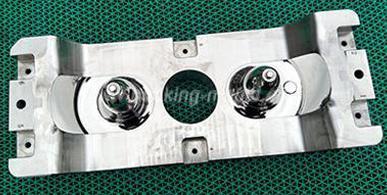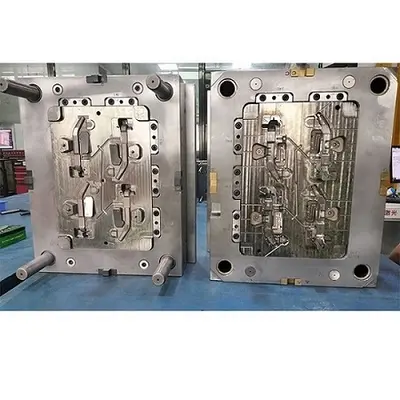

Have you ever wondered how some products have that seamless, two-tone look that just screams high-quality craftsmanship? Chances are, they were created using a process called overmolding. In this blog post, we'll delve into the world of overmolding, exploring what it is, the best plastics for the job, and whether you can overmold the same material.
When it comes to overmolding, selecting the right plastics is crucial to ensuring the success of your project. Two main types of plastics are commonly used for overmolding: thermoplastics and thermoset materials. Thermoplastics, such as ABS, Nylon, and Polypropylene, are known for their versatility, ease of processing, and recyclability. On the other hand, thermoset materials, like Silicone and Urethane, offer excellent resistance to heat, chemicals, and weathering.
When choosing plastics for overmolding, it's important to consider factors such as compatibility, adhesion, and shrinkage. The selected plastics should bond well together to create a strong, durable bond, ensuring the longevity of the finished product. Additionally, the plastics should have similar shrinkage rates to prevent warping or distortion during the molding process.
One common question that arises when discussing overmolding is whether it is possible to overmold the same material. While it is technically feasible to overmold the same material, there are both advantages and limitations to consider.
Overmolding with the same material can offer benefits such as cost savings, design flexibility, and improved performance. By using the same material for both layers, manufacturers can streamline production processes and reduce material waste. Additionally, overmolding with the same material can provide enhanced design options, allowing for intricate patterns and textures to be incorporated into the final product.
However, there are also limitations to overmolding with the same material. For example, achieving a strong bond between identical materials can be challenging, as the surfaces may not adhere well to each other. Additionally, overmolding with the same material may not always result in the desired aesthetic or functional benefits that can be achieved with different materials.
Let's dive into some real-world examples of overmolding in action. One common application is in the automotive industry, where overmolding is used to create soft-touch grips for steering wheels. By overmolding a thermoplastic elastomer onto a rigid plastic core, manufacturers can achieve a comfortable and ergonomic grip that enhances the driving experience.
In conclusion, overmolding is a versatile and innovative manufacturing technique that can elevate the quality and functionality of your products. By selecting the right plastics for overmolding and considering factors such as compatibility, adhesion, and shrinkage, you can create seamless, multi-material products that stand out in the market.
Whether you choose to overmold different materials for a contrasting look or opt to overmold the same material for cost savings and design flexibility, the possibilities are endless. So next time you're looking to take your product to the next level, consider the art of overmolding and unlock a world of creative possibilities.
We are a professional factory specializing in overmould molding. For product design and engineering support related to overmolding, please contact us yoyo@hanking-mould.com.






 Call us on:
Call us on:  Email Us:
Email Us:  No.23, XingYi Road, Wusha Community, Chang'an Town, Dongguan City, Guangdong Province, China.
No.23, XingYi Road, Wusha Community, Chang'an Town, Dongguan City, Guangdong Province, China.